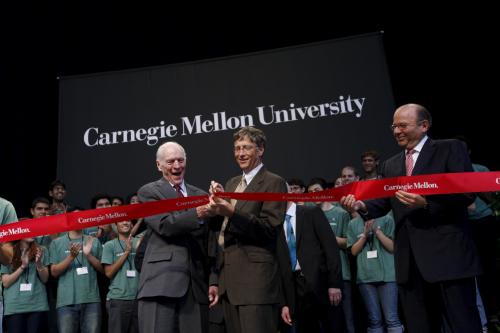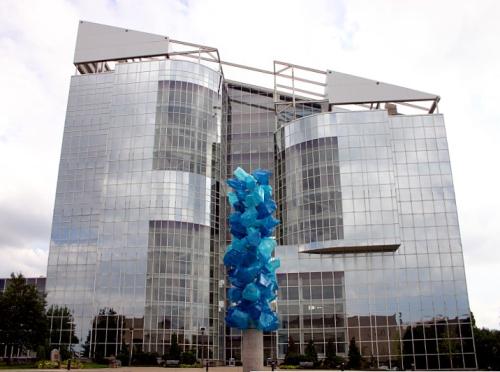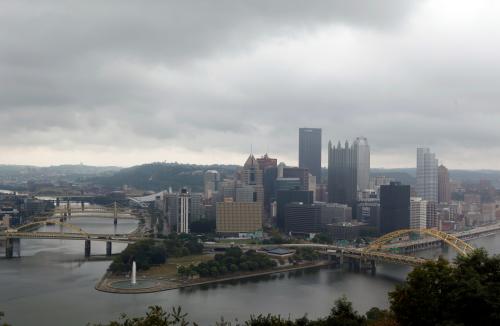Editor’s Note: This piece was originally published in the Financial Times opinion pages.
Last week in Pittsburgh, Pennsylvania, mayor Bill Peduto became the first ride-hailing customer to summon and ride a driverless taxi, marking yet another milestone in the rapid development of “autonomous vehicle” technology.
As Uber’s pilot program kicks off there, leaders in cities around the world must ask two important questions. First, how will widespread deployment of the self-driving cars on display in Pittsburgh affect how we build cities? And, second, how did Pittsburgh — a midsized former steel manufacturing city that suffered through severe deindustrialization in the late 20th century — become the research lab and test bed for this revolutionary technology?
Certainly, the shape and operations of cities today may seem anachronistic if autonomous vehicles soon dominate personal vehicular transport. Mobility for the young, elderly and people with disabilities will increase dramatically. Parking infrastructure — which by some estimates covers one-third of the downtowns in many U.S. cities — may be extraneous, opening up huge opportunities for development on valuable land. City streets will be narrowed, sidewalks widened. And a full fleet of electric self-driving cars could serve as the platform for a distributed energy grid, providing needed storage to support a robust renewable energy system.
There are some caveats. Funding streams for municipal transport and other local services — fuel taxes, traffic fines or parking fees — will dry up, requiring a rethinking of how we pay to maintain our cities.
But the future is coming. Forward-thinking urban planners and city officials should already be charting a course that takes full advantage of the transformative potential of autonomous vehicles.
The full economic benefits of breakthrough technologies, of course, accrue to those few cities that have the capacity to invent them. To date, the rapid development and deployment of driverless cars has been interpreted as a fierce competition between Uber, traditional auto companies like General Motors and Ford Motor and new rivals such as Alphabet and Tesla. Yet the research and development of new general-purpose technologies, such as the artificial intelligence and big data analytics that enable self-driving vehicles, will also remake the competitive geography of regions, with a select few “first mover” cities grabbing a significant share of brand-new markets and the jobs and investment that go along with them.
Not all cities can compete. Cities first need the right ecosystem, a critical mass of research universities, labs, private companies and venture capital with the necessary competencies. General-purpose technologies also require density of activity because they are often invented at the intersection of multiple disciplines and at varying stages in the innovation cycle — from scientific discovery to new firms to adoption and scaling by large companies.
In Pittsburgh’s case, the foundation for autonomous vehicles was laid by Carnegie Mellon University, which houses one of the nation’s leading robotics research units (the National Robotics Engineering Center ) and produces 12 times as much research on artificial intelligence as the national average. Out of this research ecosystem grew a number of start-ups, including Carnegie Robotics and Ottomatika, which took the first step towards commercializing the hardware and software required for driverless cars.
Recently, larger companies have been moving in to the city, acquiring smaller firms or talent as a way to tap into the ecosystem. In 2007, heavy machinery giant Caterpillar partnered with Carnegie Mellon to begin development of self-driving mining equipment. In early 2015, Uber opened its Advanced Technologies Center less than three miles from the university campus and began hiring dozens of employees from the NREC.
But what has made Pittsburgh especially effective is public, private and civic leadership that is willing and eager to make the city itself a laboratory for technological invention and testing. Mr Peduto deserves credit for giving Uber the freedom to operate within state laws without throwing up additional hurdles. The city and county governments have acted in close concert with universities, companies and charities to set an economic agenda for the region that puts automation, robotics and related data analysis at the top of the list.
The development of new platform technologies benefits entire economies, but the big winners are the cities and regional ecosystems that invent them and become centers of entire new industries. With the advent of multiple general-purpose technologies, the spatial geography of the global economy is about to shift again. Which cities will rise to the challenge?
The Brookings Institution is committed to quality, independence, and impact.
We are supported by a diverse array of funders. In line with our values and policies, each Brookings publication represents the sole views of its author(s).







Commentary
A driverless future for our cities
September 26, 2016